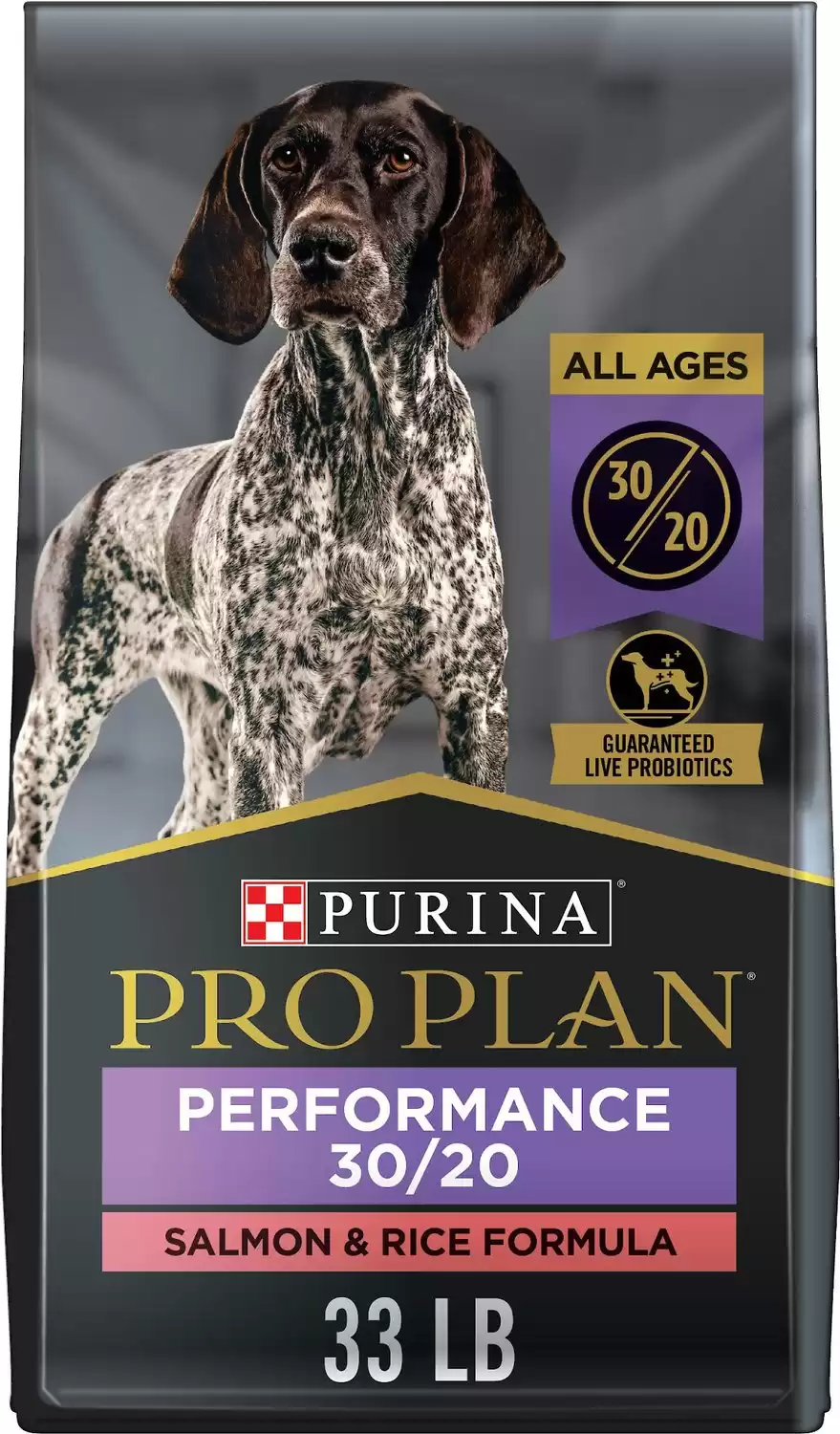Saarloos Wolfdog
Canis lupus
Advertisement
Saarloos Wolfdog Scientific Classification
- Kingdom
- Animalia
- Phylum
- Chordata
- Class
- Mammalia
- Order
- Carnivora
- Family
- Canidae
- Genus
- Canis
- Scientific Name
- Canis lupus
Read our Complete Guide to Classification of Animals.
Saarloos Wolfdog Conservation Status
Saarloos Wolfdog as a Pet:
- General Health
- Energy Level
- Shedability
- Trainability
- Intelligence
- Tendency to Chew
- Size
- Family and kid friendliness
- Yappiness / Barking
- Moderate
- Separation Anxiety
- Low
- Preferred Temperature
- Cold climate
- Exercise Needs
- High
- Friendly With Other Dogs
- Moderate
- Pure bred cost to own
- 1,000 to $2,500
- Dog group
- Working
- Male weight
- 79-90 lbs
- Female weight
- 66-77 lbs
This post may contain affiliate links to our partners like Chewy, Amazon, and others. Purchasing through these helps us further the A-Z Animals mission to educate about the world's species.
View all of the Saarloos Wolfdog images!
The Saarloos Wolfdogs make very good watchdogs and are very devoted to the people in their family.
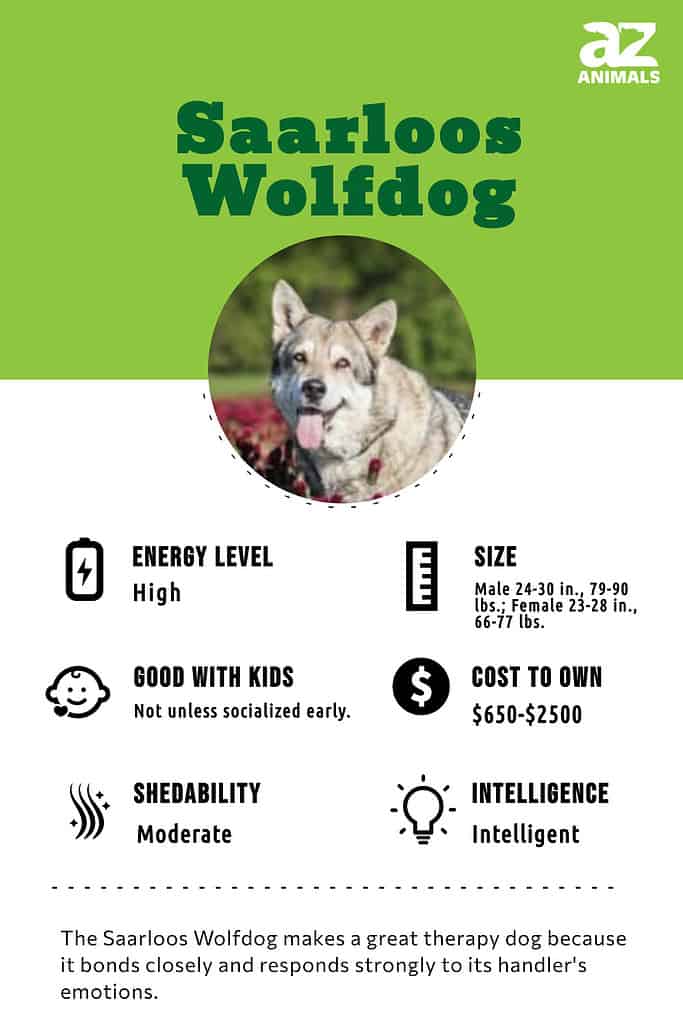
The Saarloos Wolfdog breed was created in 1932 when Leendert Saarloos mated a German Shepherd with a captive Eurasian Grey Wolf. Leendert Saarloos then mated the result of the first pair again with the German Shepherd father. This created the Saarloos Wolfdog breed. Initially, this breed was called the European Wolfdog, but was renamed when the Dutch Kennel Club officially recognized it.
See all of our expert product reviews.
Saarloos Wolfdogs can be a variety of different colors. Gray is most common, but some dogs may also be brown, red, or white. This breed is very active and has a high urge to roam around. If socialized from an early age, they can be good with kids, but otherwise may not be the best choice as a family dog.
Ownership: 3 Pros and Cons
| Pros | Cons |
|---|---|
| Devoted: Saarloos Wolfdogs are a very devoted and loyal breed. | Strong tendency to wander: This breed is more likely to wander or roam. The dogs should always be kept on a leash. |
| Good watchdog: This breed is very territorial and can make an excellent watchdog. | Not the best for families: Saarloos Wolfdogs are not the best pet for families with children. |
| Low maintenance: Saarloos Wolfdogs don’t require too much grooming. Brushing their coat a few times a week is pretty much all they’ll need. | High activity needs: This breed should be taken for at least two long walks every day. |
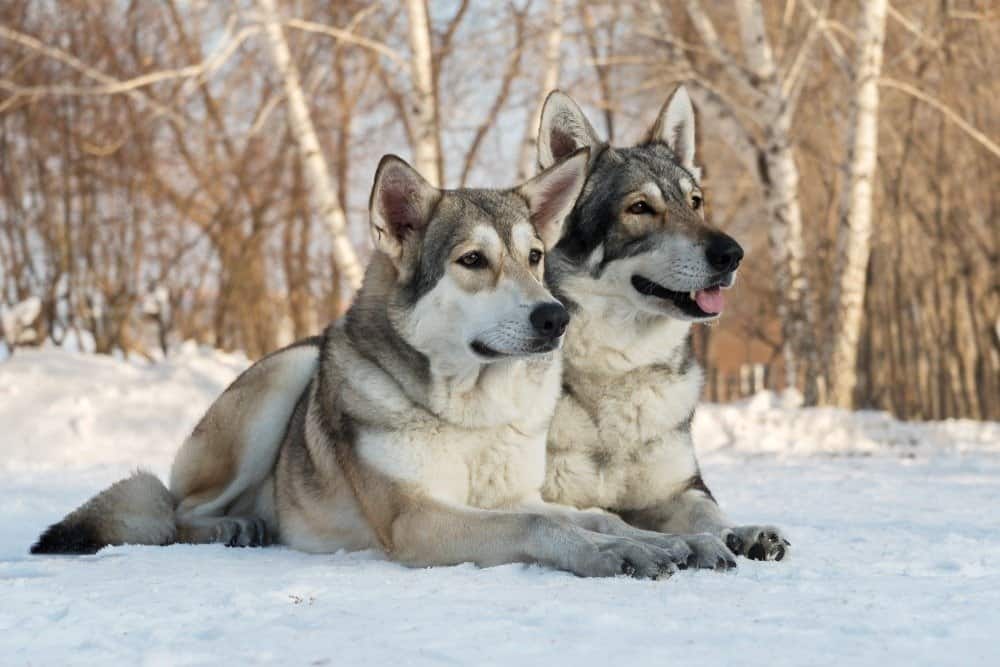
The Saarloos Wolfdogs are large dogs, but the female will be smaller in height and weight.
©yykkaa/Shutterstock.com
Size and Weight
The Saarloos Wolfdogs are large dogs. Males weigh between 79 and 90 pounds and are between 24 and 30 inches tall. Females weigh between 66 and 77 pounds and are between 23 and 28 inches tall. Puppies weigh between 25 and 32 pounds when they are three months old. By the time they are six months old, puppies will weigh between 46 and 60 pounds. Smaller females will finish growing by the time they are 16 months. Males and females who will be larger in size, finish growing by 19 months.
| Size | Male | Female |
|---|---|---|
| Height | 24 inches to 30 inches | 23 inches to 28 inches |
| Weight | 79 to 90 pounds | 66 to 77 pounds |
Common Health Issues
There are a few common health issues that these Wolfdogs may suffer from. All dogs in this breed will not develop all of these conditions, but being aware of them can help prepare you to offer the best care to your dog.
Health and Entertainment for your Saarloos Wolfdog
See all of our expert product reviews.
Some of them may suffer from hip dysplasia. Dogs with this condition have a hip joint that is malformed. Their thighbone does not connect properly with the hip, which causes the two bones to rub against one another. This can be painful and may cause a dog to limp.
Another possible health problem for this breed is spinal spondylosis. This is a condition where bony growths are found along a dog’s spine. Some dogs don’t seem to be impacted by this condition, but for other dogs it can be very painful.
Degenerative Myelopathy is another health concern for these dogs. This is a condition in which the spinal cord loses its ability to function over time. Dogs with this condition will become uncoordinated and weak. Keeping your dog more active can help the condition, but most dogs will get progressively worse if they have degenerative myelopathy.
To recap, some possible health concerns for Saarloos Wolfdogs include:
- Hip dysplasia
- Spinal spondylosis
- Degenerative myelopathy
Temperament and Behavior

The Saarloos wolfdog is intelligent and curious but not comfortable with strangers.
©Erik Lam/Shutterstock.com
The Saarloos wolfdog is a very intelligent breed. They also can be very curious, and if not properly stimulated, both physically and mentally, may exhibit destructive behaviors. Saarloos Wolfdogs have a pack mentality, like their Eurasian Grey Wolf ancestors, so they can do well with other dogs. They can be very suspicious of new people, but are more likely to run away than to display aggressive traits. This breed can also have a more independent personality, but may also suffer from separation anxiety if left alone for too long.
Care
A Saarloos Wolfdog is definitely a unique breed. The care you provide will look different from what other breeds need.
Best Dog Food
Saarloos Wolfdogs are a very active breed. When choosing a food for your dog, you may want to look to a quality formula specifically designed for more active dogs. They are also large dogs, so be sure to select a large-breed formula. In general, this dog will need to eat between 3 and 4 cups of food each day. The exact amount of food that will be right for your dog will depend on their activity level, metabolism, age, and health concerns. If you are not sure how much food your dog should eat each day, you can check with your veterinarian.
It is generally best to split the total amount of food your dog should eat each day into two servings. This can also help reduce the chances of bloat. A puppy has a smaller stomach. It will need even more frequent and smaller meals throughout the day. Puppies younger than three or four months should be fed at least four times a day. After the age of four months, you can start decreasing the number of times you feed your dog every few months.
A-Z Animals believes the best dog food for Saarloos Wolfdogs is Purina Pro Plan Sport, Energy & Vitality Support, High Protein 30/20 Salmon Dry Dog Food.
Specifically formulated for energetic dogs, this high-protein food uses a conscious ratio of protein to fat. The real fish and poultry ingredients are natural sources of glucosamine to safeguard your Saarloos Wolfdog’s joints and reduce hip dysplasia risk.
Click the link below to find Purina Pro Plan Sport Energy and Vitality Support High Protein Dog Food on Chewy or Amazon.
- Purina Pro Plan 30/20 Sport High Energy, High Protein Dog Food
- Salmon and Rice recipe contains probiotics for digestive and immune health
- Glucosamine and EPA provide joint health and mobility
- Omega-6 fatty acids and vitamin A for healthy skin and coat
Maintenance and Grooming
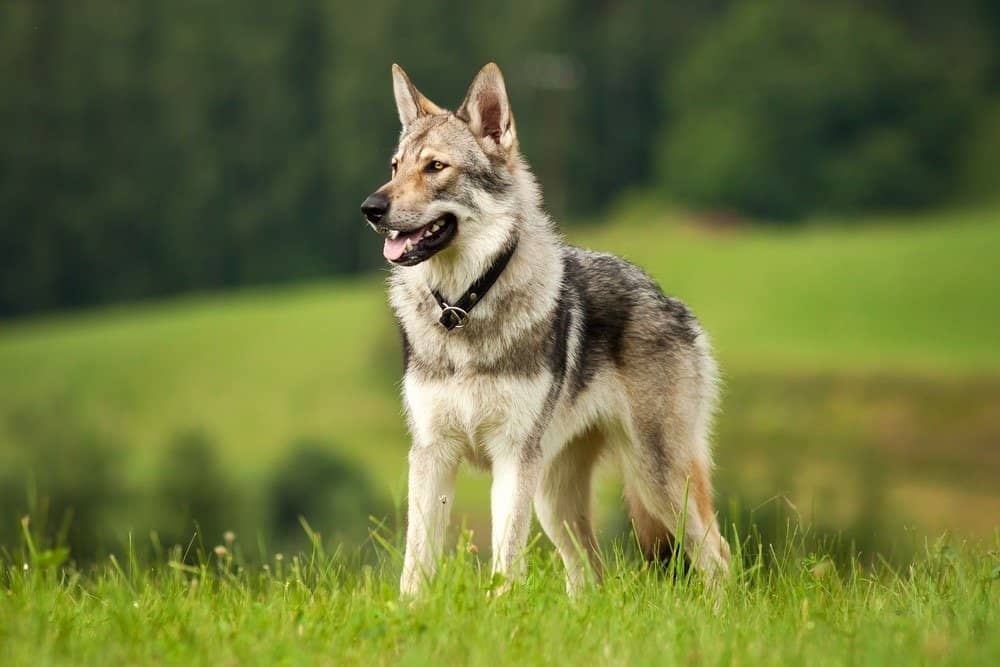
Saarloos Wolfdogs are moderate shedders and don’t need frequent baths.
©gloverk/Shutterstock.com
Grooming a Saarloos Wolfdog is easier than what is required for many other breeds. Its coat should be brushed about one or two times each week. This breed generally has two sheds each year; they are considered a moderate shedder. You shouldn’t worry about giving your dog frequent baths. Over-bathing a Saarloos Wolfdog can reduce the natural oils in its coat and may cause its coat to be less waterproof.
It will also be important to brush your dog’s teeth a few times each week. Its nails should also be clipped regularly to make sure they don’t get too long and make it painful for the dog to walk.
Training
When these Wolfdogs are trained from a very early age by an experienced trainer, they can do very well. It will be important to be very consistent with your dog and assert yourself as the ‘top dog’ so it knows where it stands in your “pack.” Consistent training and clear rules can help prevent this breed from acting out or getting into trouble. Saarloos Wolfdogs are smart and enjoy learning new things, which can make training easier when it is done correctly.
Exercise
It will be important to make sure your dog gets plenty of exercise every day. It should be taken for at least two long walks each day. It could also benefit from jogging, hiking, running, or playing in a large, fenced-in backyard. Be cautious when giving a puppy exercise. Its bones and joints are still developing, and too much exercise could lead to joint problems.
Puppies
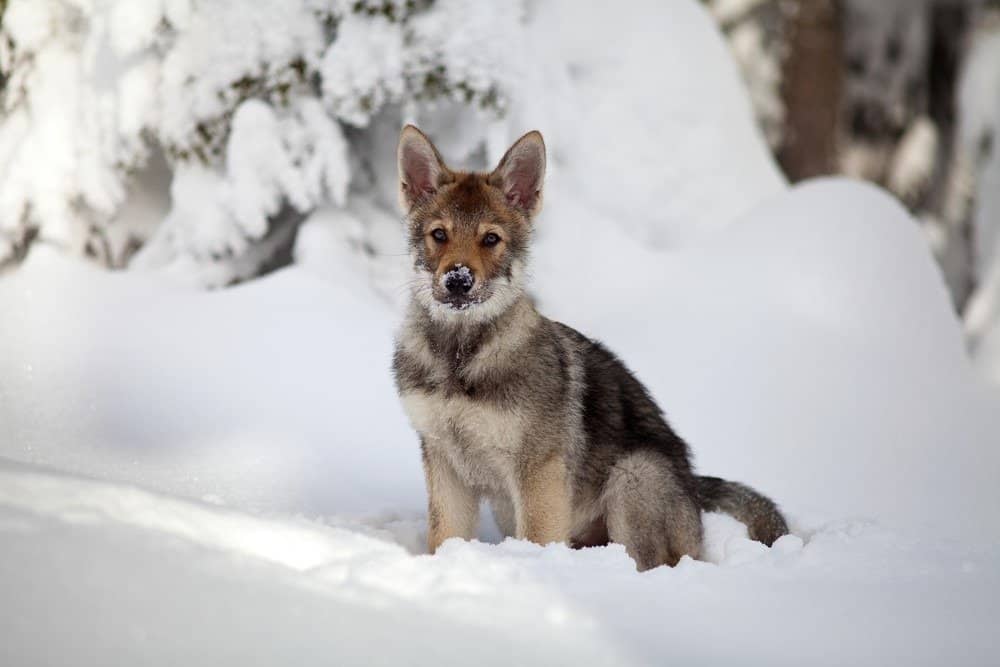
Saarloos Wolfdog puppies should be socialized right away and taught who is in charge.
©gloverk/Shutterstock.com
If you bring home a Saarloos Wolfdog puppy, it will be very important to begin training it and socializing it right away. From the beginning, you need to make it clear to the puppy that you are the head of the “pack;” otherwise, it may decide it is in charge. Scheduling puppy playdates can help your dog learn how to interact with other dogs. It will be important to use a location other than your home for these playdates to prevent your dog from getting too territorial.
Before you bring home your new dog, find a veterinarian you trust. This way, you’ll have someone lined up when your dog needs to be examined, treated for an illness, or vaccinated. You will also want to make sure your home is ready for a puppy and make sure that you have purchased food and all the necessary supplies you’ll need.
Children
Saarloos Wolfdogs aren’t always the best dog for families with children. If they don’t grow up around children and aren’t properly socialized, they may not interact with them appropriately.
Similar Dogs
Canadian Eskimo Dogs, German Shepherds, and Alaskan Malamutes are three breeds that share some similarities with Saarloos Wolfdogs.
- Canadian Eskimo Dog: Canadian Eskimo Dogs share some common characteristics with a Saarloos Wolfdog. Since both dogs were bred in cold countries, Canada and Holland, they both prefer colder climates. Eskimo Dogs from Canada are generally a better choice for families with children than Saarloos Wolfdogs. Both Saarloos Wolfdogs and Eskimo Dogs are large-sized dogs. A Saarloos Wolf dog is slightly larger with an average weight of 84.5 pounds compared to a male Canadian Eskimo Dog’s average weight of 77 pounds.
- German Shepherd: German Shepherds were used to create the Saarloos Wolfdog breed. Both breeds can be very affectionate and can also make a good watchdog. A Saarloos Wolfdog is much more likely to wander or roam than a German Shepherd and is not as heavy of a shedder.
- Alaskan Malamute: Alaskan Malamutes and Saarloos Wolfdogs are both large dogs with an average weight of around 85 pounds. In general, Saarloos Wolfdogs are less social with strangers but more affectionate with their owners than Alaskan Malamutes.
Popular Names for Saarloos Wolfdog
Below you’ll find a few popular names for Saarloos Wolfdogs. Perhaps one of these will be the right fit for your new pup.
- Charlie
- Tucker
- Buster
- Leo
- Milo
- Stella
- Lady
- Penny
- Chloe
- Riley
Saarloos Wolfdog FAQs (Frequently Asked Questions)
What is a Saarloos Wolfdog?
A Saarloos Wolfdog is a dog breed that was created by mixing a German Shepherd and a Eurasian Grey Wolf. The resulting breed is very active and likes to roam around. These dogs are large in size and very strong. They can be either wolf-grey, wolf-brown, red, or white in color. White is very rare, and wolf-brown and red are also rare due to the dominant gray genes in the breed.
How much does Saarloos Wolfdog cost to own?
Purchasing a Saarloos Wolfdog from a breeder can be expensive. A puppy can cost anywhere between $1,000 and $2,500. If you can find a Saarloos Wolfdog through a shelter or rescue organization, you should expect to pay about $300 to cover adoption fees and vaccinations.
When thinking about how much you’ll spend to bring home a Saarloos Wolfdog, be sure to also account for food, supplies, and veterinary care. These expenses can add up quickly, especially during the first year when you could easily spend over $1,000. You should continue to budget between $500 and $1,000 to cover these expenses every year you own your dog.
Is Saarloos Wolfdog good with kids?
A Saarloos Wolfdog is generally not recommended for families with young children. Unless they grow up with the children and are properly trained and socialized from a very early age, this breed doesn’t always do the best with kids.
Are Saarloos Wolfdogs good pets?
A Saarloos Wolfdog can make a great pet for experienced owners who are prepared to meet its needs. This breed has high exercise needs and also needs to be mentally stimulated.
Are Saarloos Wolfdogs dangerous?
Saarloos Wolfdogs are not a very aggressive dog breed. However, they may try to chase smaller animals due to their wolf instincts. You will always want to put your dog on a leash when you go for a walk.
How big do Saarloos Wolfdogs get?
Male Saarloos Wolfdogs generally weigh between 79 and 90 pounds. They are between 24 and 30 inches tall. Females are slightly smaller and typically weigh between 66 and 77 pounds and stand between 23 and 28 inches tall.
How long do Saarloos Wolfdogs live?
A Saarloos Wolfdog has a pretty average lifespan for a dog. Their lifespan is between 10 and 12 years.
Are Saarloos Wolfdogs herbivores, carnivores, or omnivores?
Saarloos Wolfdogs are Omnivores, meaning they eat both plants and other animals.
What Kingdom do Saarloos Wolfdogs belong to?
Saarloos Wolfdogs belong to the Kingdom Animalia.
What phylum do Saarloos Wolfdogs belong to?
Saarloos Wolfdogs belong to the phylum Chordata.
What class do Saarloos Wolfdogs belong to?
Saarloos Wolfdogs belong to the class Mammalia.
What family do Saarloos Wolfdogs belong to?
Saarloos Wolfdogs belong to the family Canidae.
What order to Saarloos Wolfdogs belong to?
Saarloos Wolfdogs belong to order Carnivora.
What type of covering do Saarloos Wolfdogs have?
Saarloos Wolfdogs are covered in Hair.
What is the scientific name for the Saarloos Wolfdog?
The scientific name for the Saarloos Wolfdog is Canis lupus.
Thank you for reading! Have some feedback for us? Contact the AZ Animals editorial team.
Sources
- 101 Dog Breeds, Available here: https://www.101dogbreeds.com/saarloos-wolfdog.asp
- Wikipedia, Available here: https://en.wikipedia.org/wiki/Saarloos_wolfdog#Description
- The Happy Puppy Site, Available here: https://thehappypuppysite.com/saarloos-wolfdog/
- Dog Breed List, Available here: https://www.dogbreedslist.info/all-dog-breeds/Saarloos-wolfdog.html
- Pet Guide, Available here: https://www.petguide.com/breeds/dog/saarloos-wolfhound/





